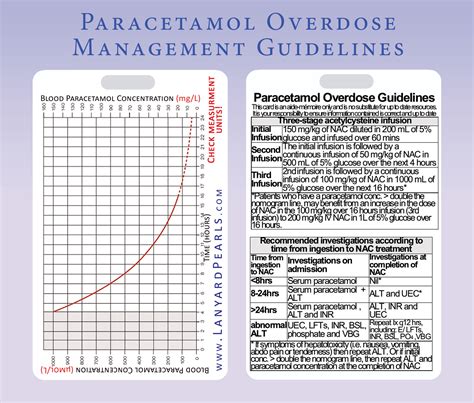
Arsenic Poisoning
Symptoms of Arsenic Poisoning
Arsenic poisoning is a serious health concern that can have detrimental effects on the human body. It occurs when a person is exposed to high levels of arsenic, a toxic chemical element found in various sources such as water, air, soil, and food. Recognizing the symptoms of arsenic poisoning is crucial for early detection and timely treatment. In this blog post, we will discuss the common signs and symptoms that may indicate arsenic poisoning.
The symptoms of arsenic poisoning can vary depending on the level and duration of exposure to the chemical. Some of the most common symptoms include:
- Abdominal pain: Persistent cramps and discomfort in the abdominal area are often reported by individuals with arsenic poisoning.
- Nausea and vomiting: A person may experience frequent episodes of nausea and vomiting, which can lead to dehydration and weight loss.
- Diarrhea: Arsenic poisoning can cause persistent diarrhea, which may be accompanied by blood in the stool.
- Skin changes: One of the noticeable symptoms is the appearance of skin abnormalities such as discoloration, lesions, and the formation of corns or warts.
- Neurological effects: Prolonged exposure to arsenic can have neurological implications, including numbness or tingling in the hands and feet, muscle weakness, and difficulty concentrating.
- Respiratory issues: Chronic exposure to arsenic may result in respiratory problems such as shortness of breath, chest tightness, and coughing.
If you suspect that you or someone you know is experiencing symptoms of arsenic poisoning, it is important to seek medical attention immediately. A healthcare professional can conduct tests to determine the presence of arsenic in the body and provide appropriate treatment options.
Causes and Sources of Arsenic Poisoning
Arsenic poisoning is a serious health concern that can have detrimental effects on the human body. It is important to understand the causes and sources of arsenic poisoning in order to effectively prevent and treat this condition.
There are several different causes of arsenic poisoning, but the main source of exposure to arsenic is through contaminated water. Arsenic is a naturally occurring element that can be found in rocks and soil. When these rocks and soil are disturbed, such as during mining or construction, arsenic can be released into the environment. This contaminated soil can then contaminate water sources, leading to arsenic poisoning.
Another common source of arsenic poisoning is through the consumption of contaminated food. Arsenic can be found in certain types of seafood, such as shellfish and fish that live in contaminated waters. Additionally, arsenic can be present in rice and other crops that are grown in areas with high levels of arsenic in the soil. This can pose a significant risk to individuals who consume these foods regularly.
Industrial processes and activities can also contribute to arsenic poisoning. Industrial chemicals, such as pesticides and insecticides, may contain arsenic as an ingredient. Workers who are exposed to these chemicals on a regular basis are at a higher risk of developing arsenic poisoning. Additionally, individuals who live near or work in industries that release arsenic into the air or water may also be exposed to higher levels of arsenic.
- Contaminated water sources
- Consumption of contaminated food
- Industrial processes and activities
| Causes of Arsenic Poisoning | Sources of Arsenic Poisoning |
|---|---|
| Contaminated water | Water sources |
| Contaminated food | Seafood, rice, crops |
| Industrial chemicals | Pesticides, insecticides |
In conclusion, the causes and sources of arsenic poisoning include contaminated water, consumption of contaminated food, and exposure to industrial chemicals. It is important to be aware of these sources and take appropriate measures to prevent arsenic poisoning. By understanding the potential risks and implementing preventive measures, individuals can safeguard their health and minimize the risk of arsenic poisoning.
Long-term Effects of Arsenic Poisoning
Arsenic poisoning is a serious health concern that can have long-term effects on individuals who have been exposed to high levels of arsenic over an extended period of time. Arsenic is a naturally occurring element that can be found in the environment, including in water, soil, and air. It can also be released into the environment through human activities, such as mining and industrial processes.
One of the long-term effects of arsenic poisoning is an increased risk of developing various types of cancer. Arsenic has been linked to an increased risk of lung, bladder, skin, and liver cancer. The International Agency for Research on Cancer (IARC) has classified arsenic and arsenic compounds as carcinogenic to humans.
Arsenic poisoning can also have detrimental effects on the cardiovascular system. Long-term exposure to high levels of arsenic has been associated with an increased risk of high blood pressure, heart disease, and stroke. This is believed to be due to the toxic effects of arsenic on blood vessels and the heart.
In addition, long-term exposure to arsenic can lead to skin problems. Chronic arsenic exposure can cause the development of skin lesions, hyperpigmentation, and thickening of the skin. These skin problems are often seen on the palms of the hands and the soles of the feet.
Moreover, long-term effects of arsenic poisoning can also affect the respiratory system. Exposure to high levels of arsenic over an extended period of time can lead to chronic respiratory symptoms such as coughing, wheezing, and shortness of breath. It can also increase the risk of developing chronic obstructive pulmonary disease (COPD).
It is important to note that the long-term effects of arsenic poisoning can vary depending on factors such as the duration and level of exposure, as well as individual susceptibility. It is crucial to reduce exposure to arsenic through various measures, such as drinking safe and clean water, avoiding contact with contaminated soil, and following occupational safety guidelines in industries where arsenic may be present.
Diagnosis and Treatment for Arsenic Poisoning
Arsenic poisoning is a serious health condition that can lead to various complications if left untreated. It is important to diagnose and treat arsenic poisoning promptly to minimize its harmful effects on the body. In this blog post, we will discuss the diagnosis and treatment methods for arsenic poisoning.
Diagnosis of Arsenic Poisoning:
Diagnosing arsenic poisoning can be challenging as its symptoms are similar to those of other health conditions. However, there are several tests and procedures that can help in the accurate diagnosis of this condition.
The first step in diagnosing arsenic poisoning is a thorough medical history evaluation. The healthcare professional will ask about your symptoms, occupation, lifestyle, and any potential exposure to arsenic. This information can provide valuable insights into the possibility of arsenic poisoning.
List of common tests and procedures used to diagnose arsenic poisoning:
| Test/Procedure | Description |
|---|---|
| Urinalysis | A urinalysis involves testing your urine sample to detect the presence of arsenic. This test helps measure the level of arsenic exposure and assess its impact on the body. |
| Hair and Nail Analysis | A hair and nail analysis can reveal long-term exposure to arsenic. Arsenic tends to accumulate in these tissues over time, making them useful for detecting chronic arsenic poisoning. |
| Blood Test | A blood test measures the presence of arsenic in the bloodstream. It can determine recent exposure to arsenic and assess its immediate effects on the body. |
| Biopsy | In some cases, a biopsy may be performed to examine tissues or organs affected by arsenic poisoning. This procedure helps confirm the diagnosis and determine the severity of the condition. |
Treatment of Arsenic Poisoning:
Once diagnosed with arsenic poisoning, immediate treatment is crucial to prevent further harm. The treatment approach may vary depending on the severity of the poisoning, symptoms, and individual factors.
List of common treatment methods for arsenic poisoning:
- Chelation Therapy: Chelation therapy involves the administration of medications that bind to arsenic and facilitate its elimination from the body. This helps reduce the arsenic levels and relieve symptoms.
- Symptomatic Relief: Medications may be prescribed to manage the symptoms of arsenic poisoning. For example, pain relievers can help alleviate abdominal pain, muscle aches, and headaches.
- Nutritional Support: A balanced diet rich in essential nutrients, especially vitamins and minerals, can help support the body’s recovery from arsenic poisoning. Nutritional supplements may also be recommended.
- Fluid Replacement: In severe cases of arsenic poisoning, intravenous (IV) fluids may be administered to maintain hydration and support organ function.
It is important to note that the treatment plan should be personalized and overseen by a healthcare professional with expertise in managing arsenic poisoning. Additionally, preventive measures should be adopted to avoid further exposure to arsenic and reduce the risk of recurrence.
Preventing Arsenic Poisoning
Arsenic poisoning is a serious health issue that can have devastating effects on individuals and communities. It is important to take proactive measures to prevent arsenic poisoning and minimize the risk of exposure. Here are some key strategies to help prevent arsenic poisoning:
- Safe Drinking Water: One of the primary sources of arsenic exposure is contaminated drinking water. It is crucial to ensure that your water source is free from arsenic. Regularly test your well water or tap water for arsenic levels. If high levels of arsenic are detected, consider using a water filtration system that specifically targets arsenic removal.
- Healthy Eating Habits: Arsenic can also be present in certain foods, especially those grown in contaminated soil or treated with arsenic-based pesticides. To minimize your exposure, choose organic produce and locally sourced food whenever possible. Additionally, peel and wash fruits and vegetables thoroughly to reduce surface contamination.
- Proper Hygiene Practices: Arsenic can be absorbed through the skin, so it is essential to practice good hygiene. Wash your hands thoroughly with soap and clean water before eating or preparing food, after using the bathroom, and after coming into contact with potentially contaminated substances or surfaces.
- Avoid Industrial Areas: Industrial activities such as mining, smelting, and manufacturing can release arsenic into the surrounding environment. It is advisable to stay away from these areas or take necessary precautions when visiting such locations. Pay attention to any advisories or warnings issued by local authorities regarding potential arsenic exposure.
By adopting these preventive measures, you can significantly reduce the risk of arsenic poisoning and safeguard your health. Remember to stay informed about arsenic-related issues and educate others about the importance of prevention.
Frequently Asked Questions
Question 1: What are the symptoms of arsenic poisoning?
Common symptoms of arsenic poisoning may include abdominal pain, nausea, vomiting, diarrhea, muscle cramps, tingling sensation in the hands and feet, and confusion.
Question 2: What are the causes and sources of arsenic poisoning?
Arsenic poisoning can occur through various means such as consuming contaminated food and water, inhaling arsenic dust or fumes, or through long-term exposure in certain occupations like mining or manufacturing industries.
Question 3: What are the long-term effects of arsenic poisoning?
Long-term effects of arsenic poisoning can include an increased risk of developing various types of cancer (such as skin, lung, bladder, and kidney cancer), skin discoloration, developmental and neurological issues, and cardiovascular diseases.
Question 4: How is arsenic poisoning diagnosed and treated?
Arsenic poisoning is diagnosed through a combination of medical history, physical examination, and laboratory tests. Treatment usually involves removing the source of arsenic exposure, supportive care to manage symptoms, and potentially chelation therapy to eliminate arsenic from the body.
Question 5: How can arsenic poisoning be prevented?
To prevent arsenic poisoning, it is important to avoid exposure to known sources of arsenic, such as contaminated water or food products. Regular testing of well water sources, using protective measures in occupations with potential arsenic exposure, and following safe handling practices can help prevent poisoning.
Question 6: Can household products contribute to arsenic poisoning?
Yes, certain household products like pesticides, herbicides, wood preservatives, and some cosmetics may contain arsenic. It is essential to read labels, use products as directed, and store them safely to minimize the risk of arsenic exposure.
Question 7: How can I determine if my water is contaminated with arsenic?
You can have your water tested by a certified laboratory or contact your local health department for information on testing. Regular testing is recommended for private wells, as they are more prone to arsenic contamination compared to public water sources.


